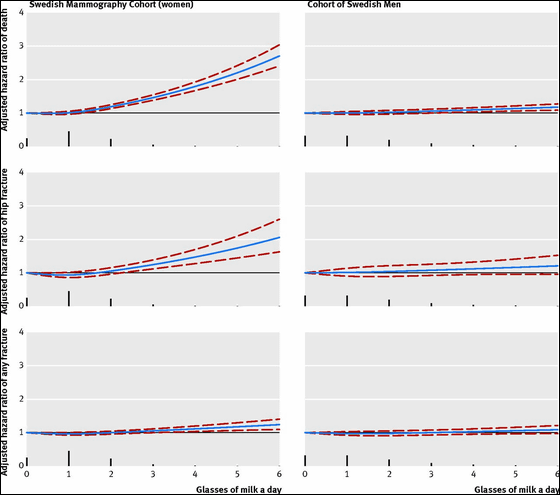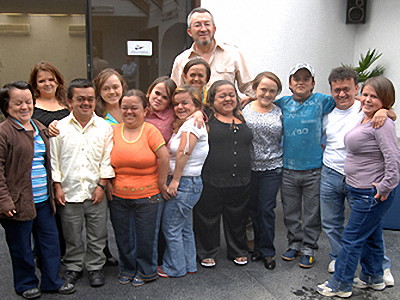A research result is announced that drinking a lot of milk raises fracture rate and mortality rate

ByMIKI Yoshihito
It is often thought that "When drinking milk, the bones are strong", but it is a surprising study that such a dualism is true opposite "the lifespan is short as the person who drinks a lot of milk and the fracture rate rises to women" Results from SwedenUppsala UniversityA research team including Mr. Karl Michaëlsson who is a professor at the University of Tokyo
Milk intake and risk of mortality and fractures in women and men: cohort studies | The BMJ
http://www.bmj.com/content/349/bmj.g6015
The idea that milk prevents broken bones is an udder sham - Vox
http://www.vox.com/2014/11/3/7149943/the-idea-that-milk-prevents-broken-bones-is-an-udder-sham
The research team at Uppsala University led by Prof. Karl is investigating the relationship between milk intake, mortality rate and fracture frequency for more than 100,000 Swedish people. In the study, 61,433 Swedish women from 39 to 74 years old as of 1987 to 1990, and 45,339 Swedish men from 1995 to 1997 as of 1997, Based on the questionnaire "What kind of food is eating at what frequency?" It seems that he continued tracking investigation for a long period of time. Specifically, female subjects were followed for about 20 years, male subjects were followed up for about 11 years, and 15,541 women died during the investigation period and 17,252 fractures , 4259 people broke the hip joint. Male subjects reported that 1111 people died, 5066 fractures, 1166 people broke the hip during the investigation period of about 11 years.
It is clear from this survey that there is a relationship between milk consumption, mortality rate and fracture frequency. In the case of women, it is also clear that people who drink 3 cups or more of milk per day had a mortality rate of 1.93 times as much as those who drink only 1 cup per day or less, and the fracture of the hip joint The probability of being 60% higher is found to be as high as 15% even for fractures in general.
In the graph below, the horizontal axis represents average daily intake of milk and the vertical axis representsHazard ratio(Upper row: death, middle row: hip joint fracture, lower row: fracture), the graph on the left side shows females and the graph on the right side shows the results of male survey. The graph shows the greatest relevance to the mortality rate of Swedish women and the intake of milk, and in the case of men, the higher the milk intake per day, the higher the mortality rate There seems to be almost nothing. Also, although there seems to be no big difference in overall fracture, it can be seen from the hip joint fracture alone that if the intake of milk increases for both males and females, the fracture rate is high.

As for the point that the "mortality rate" of female subjects who consume a lot of milk as a result of the survey was high,D-galactose"The research team has pointed out that it may be affecting. It has been confirmed that D-galactose has the effect of accelerating aging and shortening the life span in animal experiments.
The research team says, "This research result may not be applicable to people with intolerance to very strong lactose, children, adolescents etc. Nutrient concentrations in milk and daily life, together with what kind of The amount of nutrients that can be ingested is the same as what you eat, such as whether you eat something, and the amount of nutrients that you can eat are greatly different, "said those who have different tolerance and children and young people who did not become the subject of the survey It is said that research results may not apply.
Related Posts:







